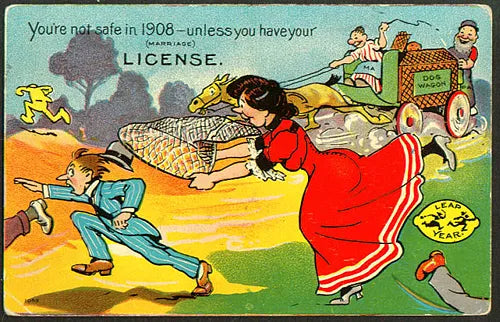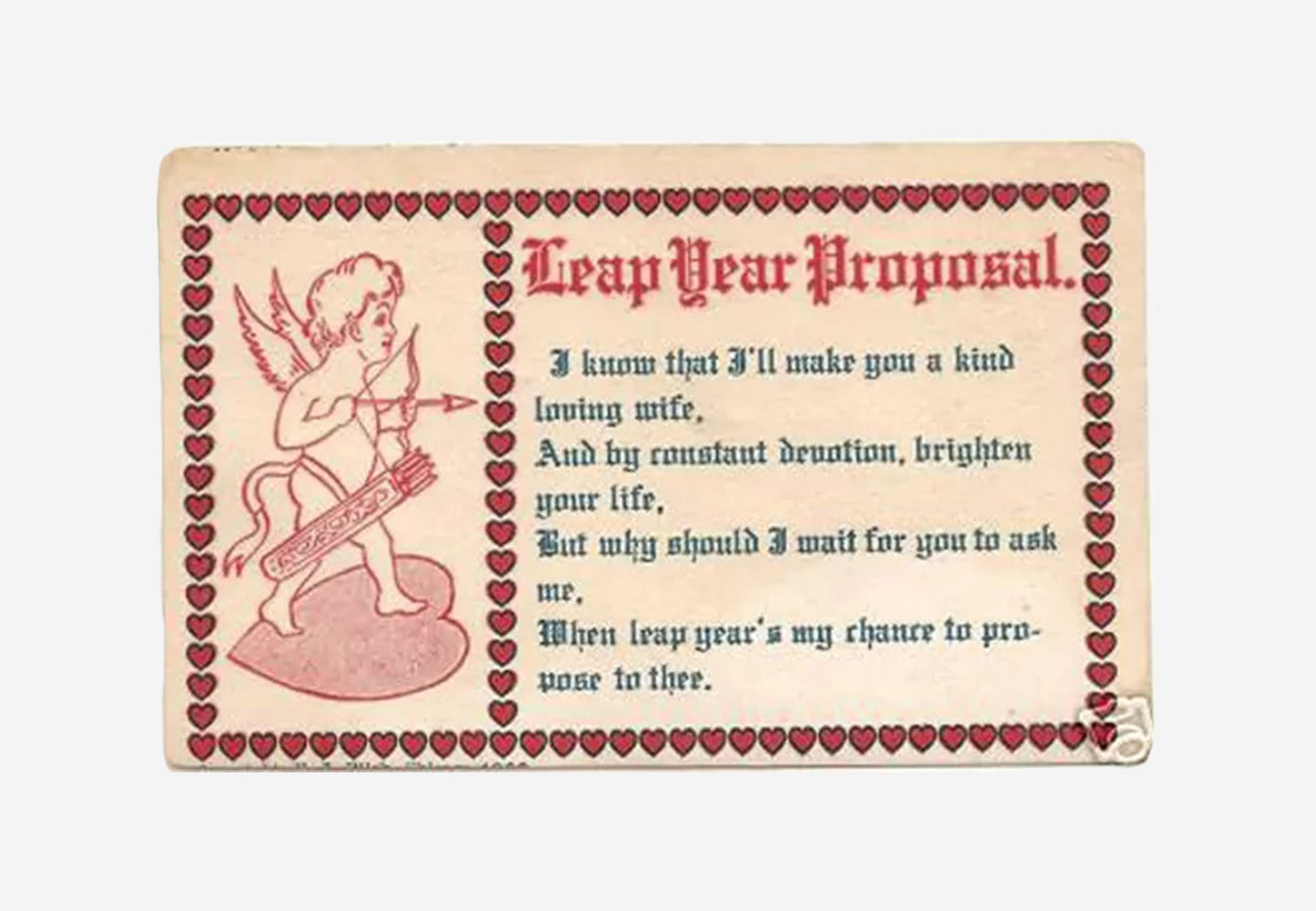If you’re a rom-com aficionado, you’re probably familiar with Leap Year (2010) starring Amy Adams (if you haven’t seen it, here’s the trailer). You might know that it’s based on a real-life Irish tradition where women propose on leap day, but do you know the full history behind it?
If not, you’re in luck: in this blog, we’re going to break down the history of the leap year proposal, why the tradition never really took off in the United States, and discuss whether it’s still relevant and worth celebrating today.
Before we get started, it’s important to note that we’re strong proponents of women proposing any day of the year here at Holden. That said, it’s still very cool to know that there’s been a historical occasion dedicated to it! We salute the women of the past who flipped the script on traditional gender roles by popping the question—even if it was only allowed once every four years.

Photo courtesy of Alex & Cole
What’s Leap Day?
Most years, there are 365 days in a year, but every four years, there are 366. Is this confusing? Yes! Is there a scientific reason for it? Also yes!
The Gregorian calendar, the most widely used calendar system today, generally aligns with the Earth's orbit around the sun. While this orbit takes roughly 365 days, it's actually a bit longer: 365 days, 5 hours, 48 minutes, and 56 seconds to be exact.
To prevent the seasons from drifting, we typically add an extra day at the end of February to most years divisible by four. This year’s leap day will be on February 29, 2024, following our last in 2020.
Why do we call it leap day? Think about the day of the week your last birthday fell on. Let’s say it was on a Tuesday sometime in March. The year before, it was on a Monday. This year, it’ll be on a Thursday, “leaping” over Wednesday because of February 29th.
How Did Leap Year Proposals Come to Be?
As legend tells it, the leap year proposal tradition, officially dubbed “Bachelor’s Day” or “Ladies’ Privilege,” began in the 5th century. An Irish nun, St. Brigid of Kildare, told St. Patrick that it was unfair women needed to wait for men to propose, and asked that women be allowed to propose marriage too.
Saint Patrick first suggested that women be allowed to pop the question every seven years, but Saint Brigid allegedly drove a hard bargain. He ultimately decreed that women could propose to a man only on leap day, February 29th.
(Other versions of the story say that St. Brigid asked St. Patrick to marry her. Sadly, he declined but offered her a silk gown as consolation. Not a terrible trade-off if you ask us!)

St. Brigid of Kildare asked that women be allowed to propose marriage.
Do Other Cultures Participate in Bachelor’s Day?
The Irish eventually brought the Bachelor’s Day tradition to Scotland. In 1288, a Scottish law was passed that allowed women to propose on leap day. If the recipient of the proposal declined, he would be fined anywhere between £1 to a silk gown.
Some say Queen Margaret passed the law, but others are skeptical of this claim given that she would have only been 5 years old at the time! It’s also unclear why Scottish women participating in the tradition are advised to wear red petticoats under their dresses, but some credit it as a “warning” to the men receiving the proposals.
By the 1800s, women proposing to men on leap day had become more popular in parts of Europe and the U.K. However, the punishment for when a proposal was refused varied by culture.
In Denmark, a man would be required to gift 12 pairs of gloves to the rejected woman so that she could hide her ringless hands. In Finland, the man would need to give the woman enough fabric to sew a skirt.
During the 20th century, the tradition made its way to the United States, but never really took off in popularity. There’s evidence that the concept of women proposing was too threatening to men; postcards from the early 1900s depicted “husband hunters” as masculine and violent, and their male “victims” as scared and emasculated.

Postcard from the early 1900s.
Do People Still Propose on Leap Day?
Women proposing to men is much more common today, but many still appreciate the novelty of a leap day proposal. These days, there aren’t any hard rules on how to participate, though.
You and your partner don't need to be Irish, Finnish, Scottish, or Dutch. You don’t need to identify as a woman and your partner doesn’t need to identify as a man, either. Luckily, the person you're proposing to also need not worry about facing a fine if they decline!
If you’re already engaged, you might consider proposing back to your partner on leap day—or any day for that matter. Double or mutual proposals have started trending in recent years, largely due to the LGBTQ+ community’s influence in redefining traditional engagement and marriage norms.
At Holden, we don’t believe that anyone should feel bound to any tradition that doesn’t resonate with them. As a company that seeks to make the ring shopping experience more inclusive and accessible for all, all of our engagement rings are designed to be completely gender-neutral.
If you don’t think your partner will be into a classic solitaire engagement ring style, you can also opt for a flat band with or without diamonds—or skip the ring altogether. At the end of the day, what matters most is the commitment you make together, not the piece of jewelry meant to symbolize it!
Questions? Give us a shout at help@hiholden.com or a ring (pun intended) at 646.722.6817.
Cover Photo: F.J. Bilek's 1908, Leap Year Proposal
